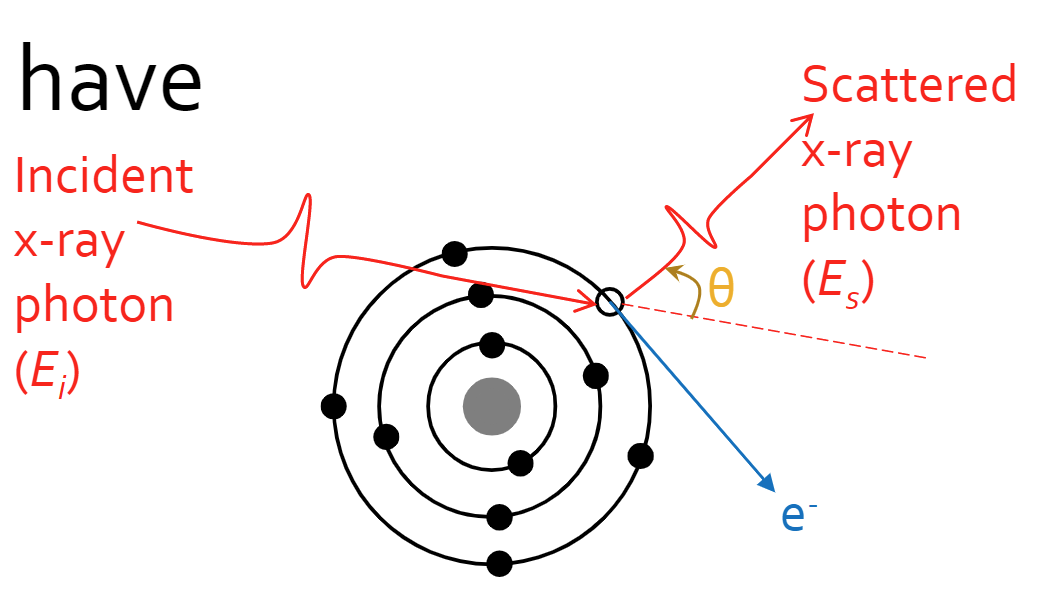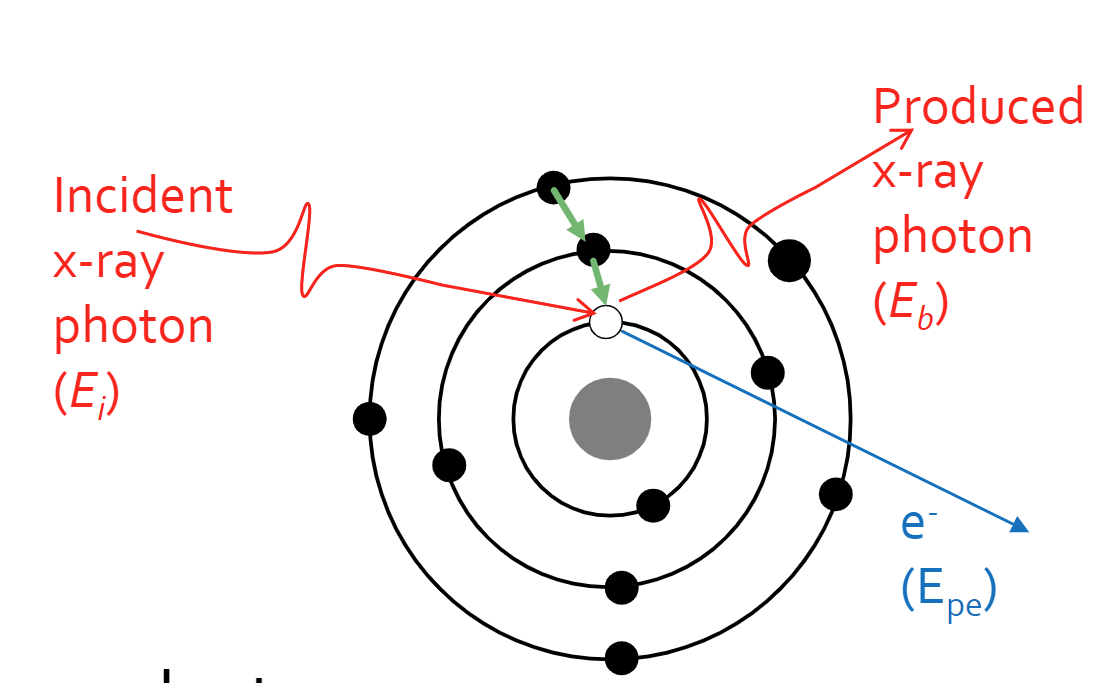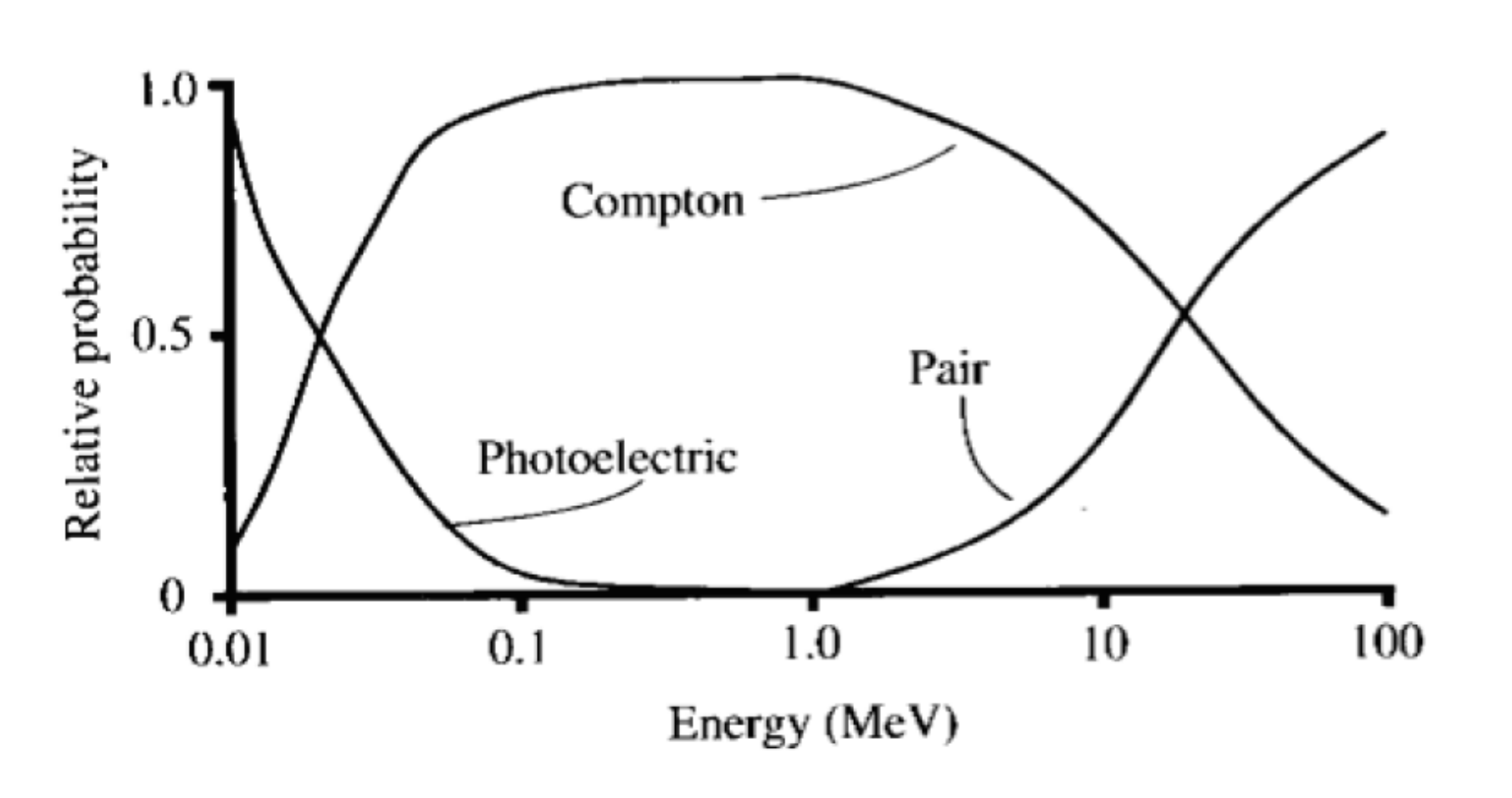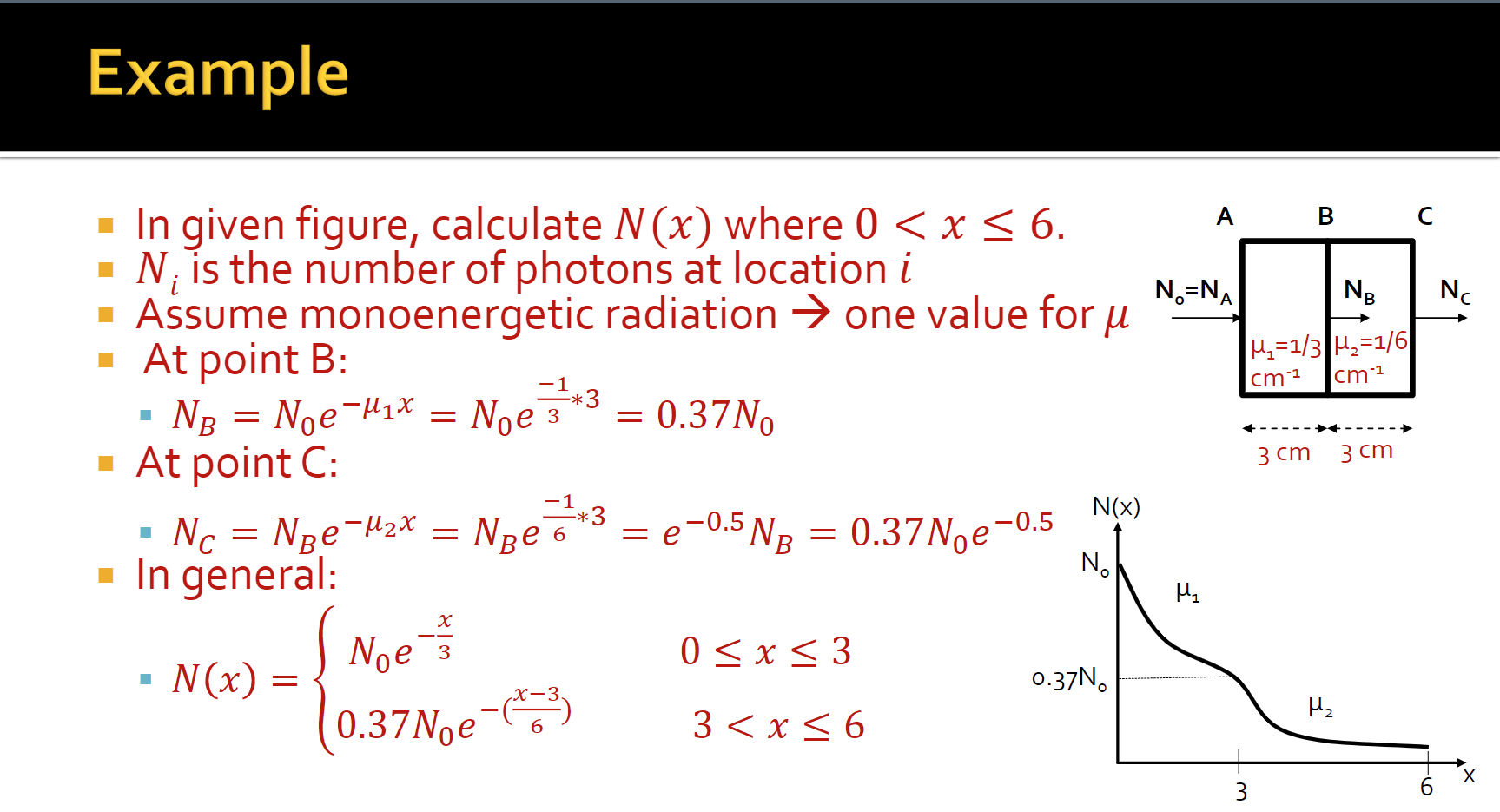
4. X-Ray Image Formation
Imaging
As photons interact with matter, they are absorbed, scattered, and/or transmitted
Transmitted (& some scattered) photons reach the x-ray detector
Photon interaction depends on the material’s density and atomic number, as well as the photon’s energy
Modes of Interaction
* Orange highlight indicates the mode is more likely to occur in diagnostic imaging
Rayleigh (Coherent) Scattering
In rayleigh scattering, the photon interacts with an entire atom and is deflected into a new direction
Little to no change in photon energy with scattering
More likely in mammography
Electrons within the matter oscillate in phase when the photon interacts, but none are ejected
The higher the atomic number, the more likely rayleigh scattering is
Rayleigh scattering has a pretty low energy range, but this affects quality
Compton Scattering
Compton is the most common mode of interaaction within the imaging energy range
In compton scattering, the photon interacts with a single (probably valence) electron
Electron is ejected and the photon loses energy, veering off of its path
Compton scattering depends on material density and its electron density
Small note, 511 keV is a constant equal to one half of mc^2


Photoelectric Effect
The photoelectric effect describes a photon interacting with a single electron, which bumps around energy levels
All of the photon’s energy is absorbed by the electron in the photoelectric effect
Energy absorbance in the photoelectric effect produces a photoelectron , an ion, and a low-energy characteristic radiation
Photoelectric energy produced = incident energy - binding energy
The photoelectric energy produced increases as atomic number increases, but decreases as the indicent energy increases (aka electrons might pass through without being absorbed)

Pair Production
Pair Production occurs when the photon interacts with the nucleus
Energy must be greater than 1.02 MeV (double the static general photon energy, which is 511) to produce a positron-electron pair
The energy range for pair production is used more in radiation therapy than in diagnostic imaging
Positron and electron may interact and produce a pair of annihilation photons in the opposite direction, each with 511 keV
Photodisintegration
Photodisintegration occurs when the photon interacts with the nucleus
A nuclear particle is produced
Requires VERY high energy
Energy & Modes of Interactions

Propagation Model - Beer’s Law
N0 is the number of incident photons, N is the number of photons coming out of a material, and Δx is the distance the photons travel (object’s thickness)
Beer’s Law: N = N0 * e^-μΔx
μ is the linear attenuation coefficient
cm^-1
μ is dependent on material density and atomic number
Usually between 0.05 and 0.5 cm^-1
Mass attenuation coefficient: μ / density

4. X-Ray Image Formation
Imaging
As photons interact with matter, they are absorbed, scattered, and/or transmitted
Transmitted (& some scattered) photons reach the x-ray detector
Photon interaction depends on the material’s density and atomic number, as well as the photon’s energy
Modes of Interaction
* Orange highlight indicates the mode is more likely to occur in diagnostic imaging
Rayleigh (Coherent) Scattering
In rayleigh scattering, the photon interacts with an entire atom and is deflected into a new direction
Little to no change in photon energy with scattering
More likely in mammography
Electrons within the matter oscillate in phase when the photon interacts, but none are ejected
The higher the atomic number, the more likely rayleigh scattering is
Rayleigh scattering has a pretty low energy range, but this affects quality
Compton Scattering
Compton is the most common mode of interaaction within the imaging energy range
In compton scattering, the photon interacts with a single (probably valence) electron
Electron is ejected and the photon loses energy, veering off of its path
Compton scattering depends on material density and its electron density
Small note, 511 keV is a constant equal to one half of mc^2


Photoelectric Effect
The photoelectric effect describes a photon interacting with a single electron, which bumps around energy levels
All of the photon’s energy is absorbed by the electron in the photoelectric effect
Energy absorbance in the photoelectric effect produces a photoelectron , an ion, and a low-energy characteristic radiation
Photoelectric energy produced = incident energy - binding energy
The photoelectric energy produced increases as atomic number increases, but decreases as the indicent energy increases (aka electrons might pass through without being absorbed)

Pair Production
Pair Production occurs when the photon interacts with the nucleus
Energy must be greater than 1.02 MeV (double the static general photon energy, which is 511) to produce a positron-electron pair
The energy range for pair production is used more in radiation therapy than in diagnostic imaging
Positron and electron may interact and produce a pair of annihilation photons in the opposite direction, each with 511 keV
Photodisintegration
Photodisintegration occurs when the photon interacts with the nucleus
A nuclear particle is produced
Requires VERY high energy
Energy & Modes of Interactions

Propagation Model - Beer’s Law
N0 is the number of incident photons, N is the number of photons coming out of a material, and Δx is the distance the photons travel (object’s thickness)
Beer’s Law: N = N0 * e^-μΔx
μ is the linear attenuation coefficient
cm^-1
μ is dependent on material density and atomic number
Usually between 0.05 and 0.5 cm^-1
Mass attenuation coefficient: μ / density

 Knowt
Knowt